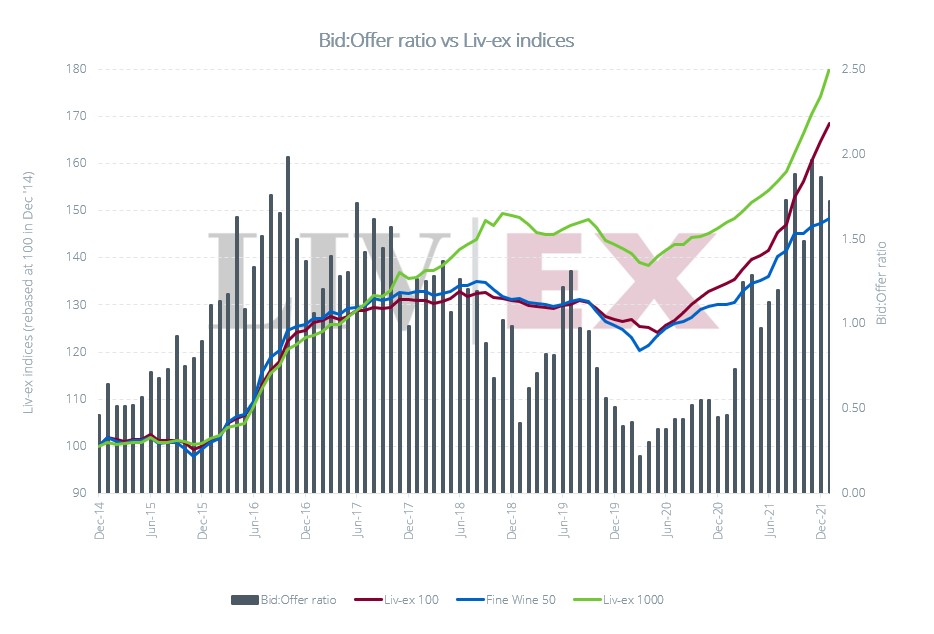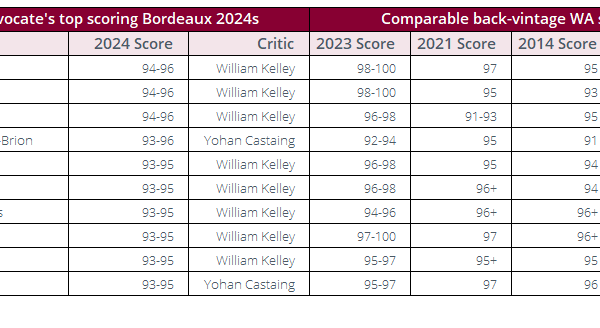- The bid:offer ratio is currently at 1.72
- This points to positive market sentiment and relative price stability.
- The ratio has largely stayed above 1 as the market has broadened.

What is the bid:offer ratio?
A bid to offer ratio compares the total value of bids (firm commitments to buy) to the total value of offers (firm commitments to sell) on the market.
The ratio’s aim is to indicate the level of demand that exists in the secondary market. Historically, a bid:offer ratio above 0.5 tends to indicate the beginning of an uptrend in the market, or at the very least acts as a sign of price stability.
Currently, the bid:offer ratio on the Liv-ex trading exchange is 1.72. In 2020, as the reality of Covid 19 spread and lockdown was announced, the ratio dropped to 0.2. And as a consequence, the market weakened.
A rising ratio in a rising market
In 2021 – the secondary market’s most successful year ever – the bid:offer ratio quickly climbed from 0.46 to over 1.0 and thereafter rarely dropped below that level. Towards the end of the year it even exceeded 2.0 for the first time.
In January this year we reported that the exposure on the exchange – the total value of firm bids and offers – had reached the £100 million milestone.
The bid:offer ratio is just one indicator of market sentiment, but at its current level it suggests continued confidence in fine wine. However, as oil and global stocks react to escalating Russia-Ukraine tensions, it remains to be seen whether the fine wine market can maintain the strong momentum of last year.
Liv-ex analysis is drawn from the world’s most comprehensive database of fine wine prices. The data reflects the real time activity of Liv-ex’s 560+ merchant members from across the globe. Together they represent the largest pool of liquidity in the world – currently £100m of bids and offers across 16,000 wines. Independent data, direct from the market.
Not a member of Liv-ex? Request a demo to see the exchange and a member of our team will be in touch with you shortly.



